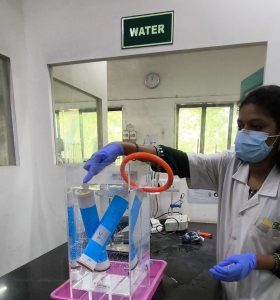Why is forward osmosis a good enabling technology for resource recovery & recycling from industrial wastewater?
Generally speaking, membrane filtration is a simple filtration process with physical retention of substances on a filter surface with small pore sizes. Extensively used for industrial wastewater treatment, membrane filtration is a separation process where unwanted substances (e.g. bacteria, virus, heavy metals, and other soluble & suspended contaminants) are physically removed without conversion.
In the case of industrial wastewater treatment, forward osmosis membrane technologies enjoy at least two key advantages over traditional pressure driven membrane technologies:
- High performance resilience and operational stability in challenging high-fouling applications, which reduces the need for extensive pre-treatment processes.
- Ability to achieve higher water recovery rates.
Contrary to traditional pressure driven membrane technologies, forward osmosis (FO) uses chemical energy in the form of osmotic pressure to drive water transport across a semi-permeable membrane along the osmotic pressure gradient between feed (impaired water source with low solute concentration = low osmotic pressure) and draw (engineered solution with high solute concentration = high osmotic pressure) streams.
In the absence of hydraulic pressure, the performance of forward osmosis based processes is more resilient towards membrane fouling since the water transport across the membrane will decline at a much lower rate as compared to pressure driven processes. This especially holds true for challenging high-fouling applications.
Being powered by an osmotic gradient, the energy requirement of water transport across a forward osmosis membrane is up to 90% less than that of reverse osmosis. In addition, osmotic gradients can achieve pressure differences in excess of 300 bar – greatly exceeding the hydraulic pressure range in pressure driven processes.
What is special about the forward osmosis technology from SideStroem Water Technologies?
Today’s forward osmosis membrane technologies are designed to selectively enable trans-membrane water transport while physically removing unwanted substances (e.g. bacteria, virus, heavy metals, and other soluble & suspended contaminants).
SideStrom Water Technologies recognizes the need for more efficient resource recovery systems to enable recycling of precious natural resources while simultaneously reducing the overall ecological impact of water treatment systems.
We are therefore developing a novel nanofiltration-type forward osmosis (NF-FO) technology tailored to selectively recover & recycle both water and Sodium Chloride from wastewater streams in industries relying heavily on salt for their various production processes. Such industries include textile dyeing industries and tanneries, to name a few.
The schematics below illustrate the advantages of including our NF-FO technology in an NF/RO/MEE zero liquid discharge system for treating textile dyeing wastewater (adopted from Vishnu et. al. 2008):
- 16% increase in water recovery (from 321m3/d to 372m3/d).
- 71% increase in sodium chloride recovery (from 1152kg/d to 1970kg/d).
- 13% reduction in the amount of wastewater to be treated by the multi-effect evaporator.
- Reduction in the number of pre-treatment steps needed.



Our development strategy
By tweaking the pore size of the forward osmosis membrane rejection layer using the same chemistry known from today’s nanofiltration (NF) membrane technologies, we can achieve forward osmosis membranes with high rejection for divalent salts (e.g. MgSO4) and low rejection for monovalent salts (e.g. NaCl).
What we end up with, is a nanofiltration-type forward osmosis (NF-FO) membrane capable of de-watering wastewater streams while simultaneously recovering monovalent salts (e.g. NaCl).
In addition, the NF-FO membrane will enjoy a higher water flux and less concentration polarization as compared to today’s water selective forward osmosis membrane technologies.



